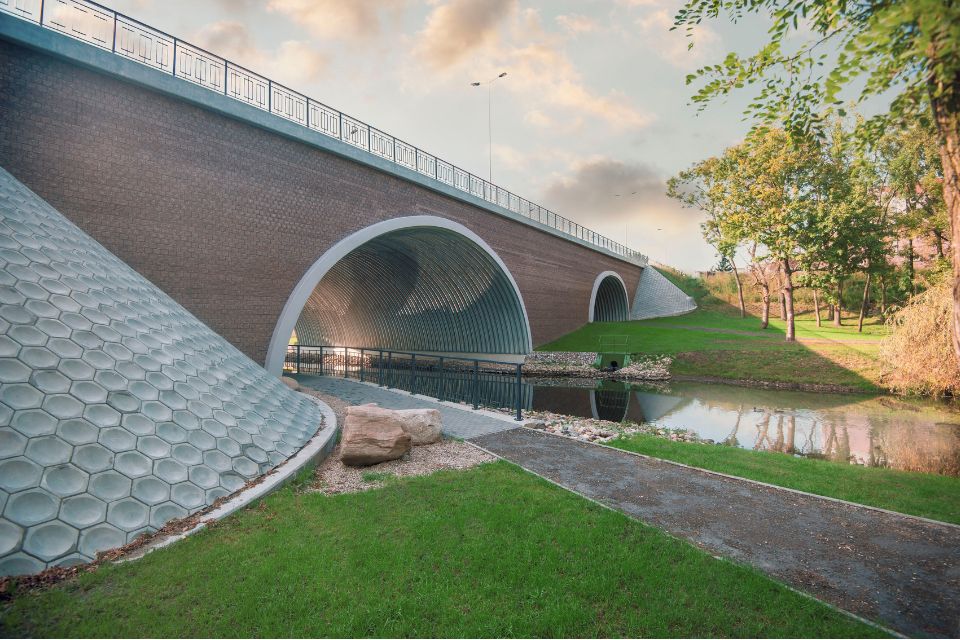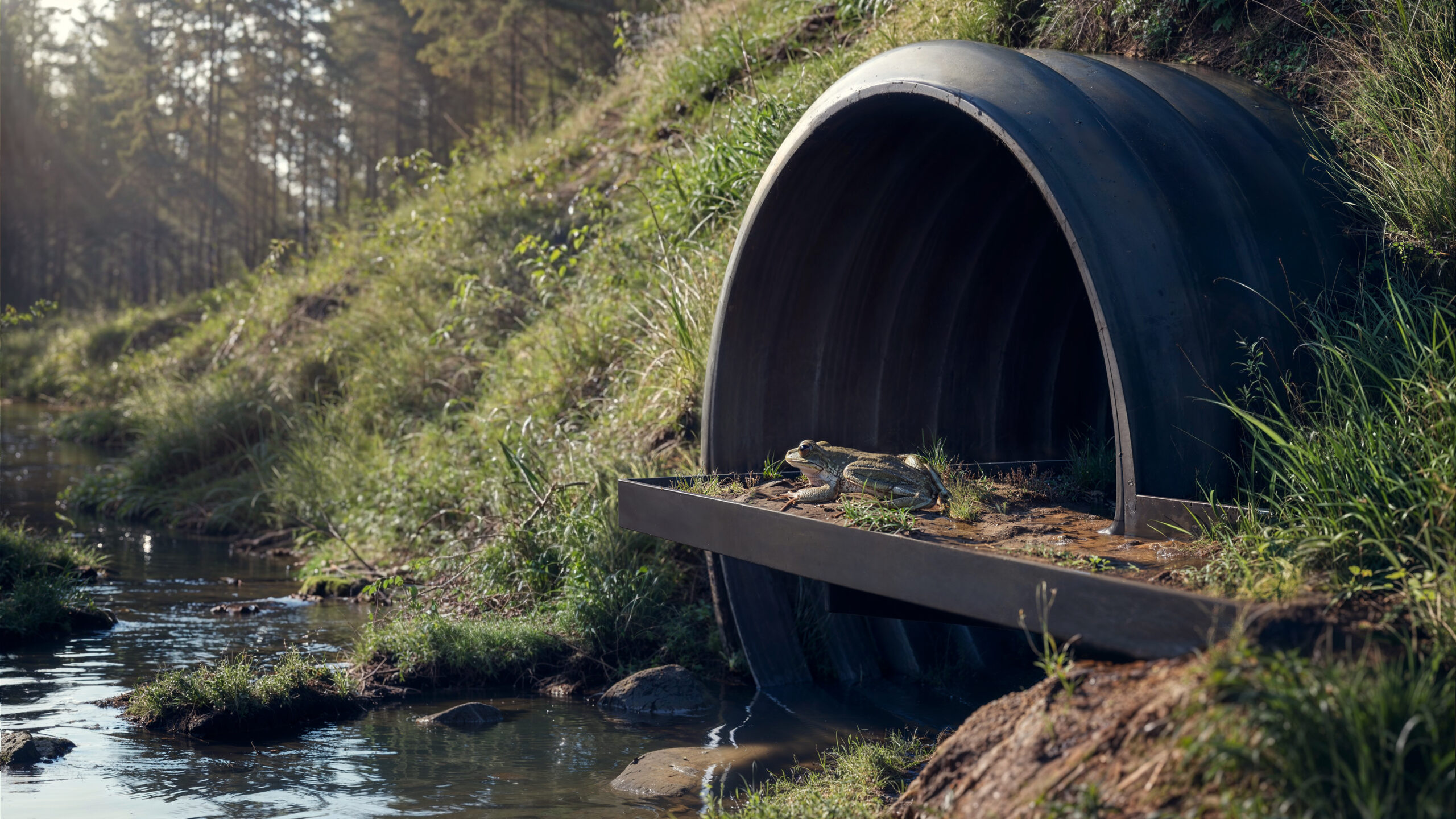Sustainable geotechnical solutions: Challenges and opportunities
Built infrastructure must exist in harmony with the society of which it is a part to be sustainable. Examples abound that highlight construction, such as structurally deficient bridges or other infrastructure built on unsuitable ground. But with comprehensive understanding of ground and soil conditions and careful planning, it’s possible to design more sustainable approaches to infrastructure.
Sustainability has become a crucial consideration in infrastructure development. Geotechnical engineering, an important part of infrastructure development, is affected by the challenges and opportunities that sustainability-oriented regulation and initiatives pose. While technical, financial, and operational barriers can challenge and slow adoption, drivers include regulatory requirements that will mandate accountability for sustainability measures as well as governmental and corporate initiatives and approaches (such as implementations of ESG policies and strategies). In addition, opportunities exist to reduce environmental impact at the same time as enhancing long-term cost-effectiveness of infrastructure.
Sustainability from the start
Geotechnical engineering plays an integral part in ensuring sustainability from the start in civil engineering projects. A sustainable built environment means including consideration for environmental and social factors in planning and design, looking at the full scope of both construction project and lifespan after completion. Geotechnical engineering is key from the very beginning of these projects because of the role it plays in the very foundations of construction.
Think for example about construction projects with significant geotechnical impacts. If the ground on or in which infrastructure is built cannot cope with the mass it will eventually bear, it is neither economically nor socially sustainable. While potentially less expensive upfront, such projects can lead to more expensive fixes down the line – and can also fail, leading to a variety of expensive and time-consuming challenges, such as needing to rethink and rebuild infrastructure that is integral to society’s basic functions. This could be everything from subway tunnels subject to flooding to motorways that buckle under in landslide conditions and so on, considering how the ground can retain its natural form, serve as a stable foundation for building, effectively serve drainage needs, and prevent pollution through filtering or separation techniques. All of these – and other – geotechnical problems must be considered early in civil engineering planning to understand how geotextiles and geogrids and other geotechnical solutions can be deployed to offer longer-term sustainability.
Planning such projects sustainably demands thinking about the resources used in construction as well as the long-term land use influence.
What are some other considerations in developing sustainable geotechnical solutions?
What must be done: Policy and regulation on sustainable geotechnical practices
While planning with sustainability in mind would be the ideal, it sometimes takes regulatory forces to normalise putting the ideal into practice. Government policies and broader regulations, such as the EU Green Deal and EU Green Infrastructure Strategy, influence how quickly and comprehensively sustainable geotechnical (and complementary) practices and solutions are adopted. Many countries are looking at stricter environmental regulations, encouraging the use of eco-friendly materials, erosion control methods and more energy-efficient construction techniques.
Policies that mandate life cycle costing and assessments, carbon footprint reduction, and resilient infrastructure development are driving change in the industry. Incentives such as tax breaks, grants, and certification programs further support the adoption of sustainable geotechnical practices. However, regulatory inconsistencies and lack of enforcement in some regions pose challenges, while political swings can create massive inconsistency in practice. To overcome these issues, standardisation of sustainability criteria and active collaboration between policymakers, engineers, and stakeholders are necessary to make regulation mirror best practice.
Beyond just today: Lifecycle assessments of sustainable geotechnical solutions
Lifecycle assessments (LCAs) are essential in evaluating the long-term benefits and costs of sustainable geotechnical practices. Traditional geotechnical methods often focus on immediate construction needs, whereas sustainable approaches consider the entire lifecycle of infrastructure, including material sourcing, construction, operation, maintenance, and eventual decommissioning.
Sustainable geotechnical solutions, such as ground improvement techniques, recycled materials, and bioengineering methods, can reduce environmental impact and improve cost-efficiency over time. However, one major challenge is the higher initial investment required. Despite these upfront costs, LCA demonstrates that sustainable solutions often result in lower maintenance costs, extended infrastructure lifespan, and reduced carbon footprints, making them economically viable if the total value is assessed holistically.
Using technology for smart, sustainable geotechnical monitoring
Advancements in smart geotechnical monitoring play a pivotal role in ensuring the success of sustainable solutions. Real-time monitoring technologies, such as wireless sensor networks, geotechnical instrumentation, and remote sensing, enable engineers to track soil behaviour, ground movement, and structural stability with unprecedented accuracy.
Smart monitoring not only enhances the safety and reliability of infrastructure but also allows for predictive maintenance, reducing costly repairs and environmental damage.
However, challenges remain, including data integration, high implementation costs, and the need for skilled personnel to interpret complex data. Overcoming these challenges requires collaboration between industry leaders, researchers, and technology providers to develop cost-effective, user-friendly monitoring systems.
Trends in sustainable geotechnical engineering for infrastructure
The future of geotechnical engineering expects some key transformations in the near future, as new materials, technologies, and methodologies emerge. Some key trends may include:
- Innovative materials: The development of sustainable construction materials will reduce reliance on traditional, high-carbon-footprint materials.
- AI and machine learning: Predictive analytics powered by AI will enhance decision-making in geotechnical engineering, optimising design processes and improving sustainability outcomes.
- Carbon sequestration techniques: Emerging methods for carbon sequestration in geotechnical applications, such as biochar soil amendments and mineral carbonation, will help mitigate climate change impacts.
- Nature-based solutions: The integration of vegetation-based reinforcement, bioengineering, and ecosystem restoration in infrastructure design will contribute to resilient and sustainable development.
The future of sustainable infrastructure with geotechnical solutions
While challenges remain in adopting sustainable geotechnical solutions, the opportunities far outweigh the obstacles. Through regulation and policymaking and enforcement, lifecycle assessment, smart monitoring technologies, and innovative advancements, geotechnical engineering can play a vital role in building resilient, sustainable infrastructure.
As the industry continues to evolve, collaboration among engineers, researchers, policymakers, and industry stakeholders will be key in driving the widespread adoption of sustainable geotechnical practices.
Learn more about ViaCon’s geotechnical solutions.

